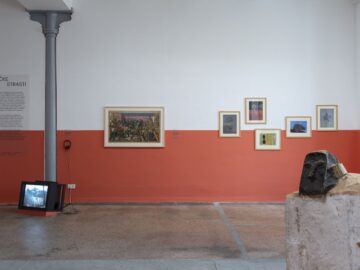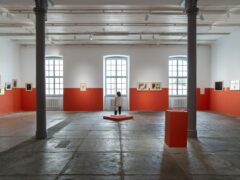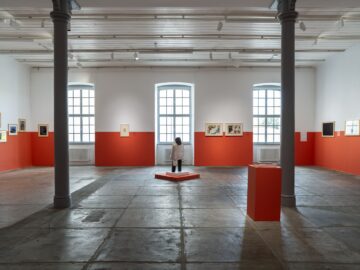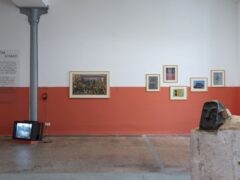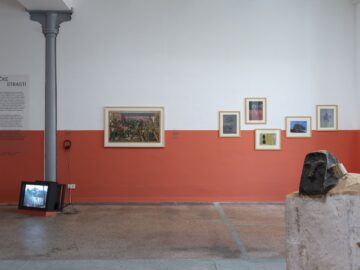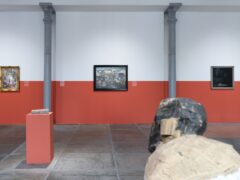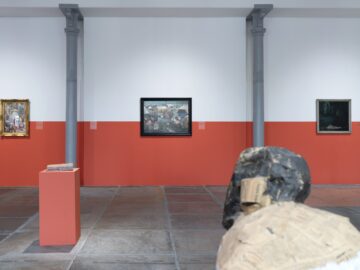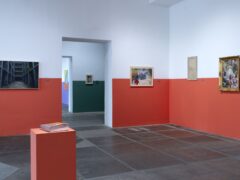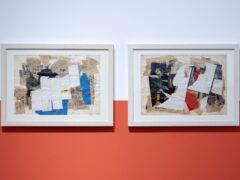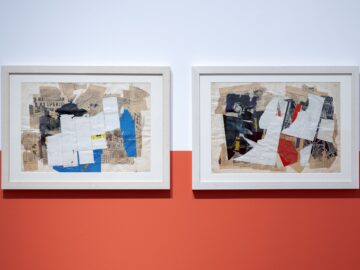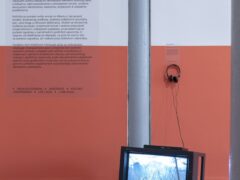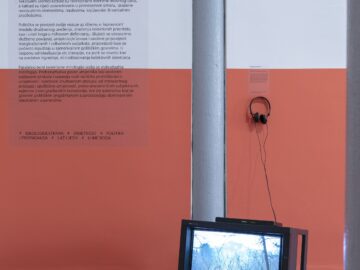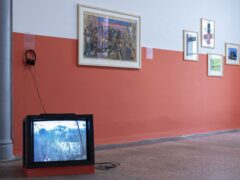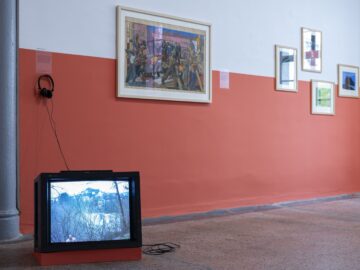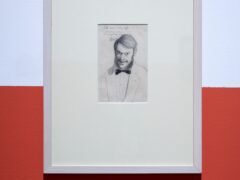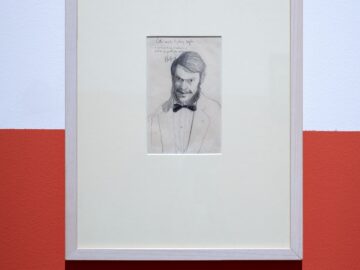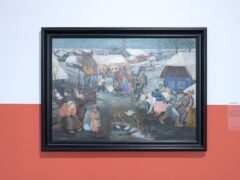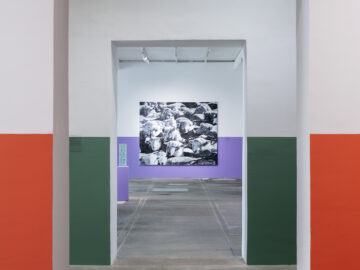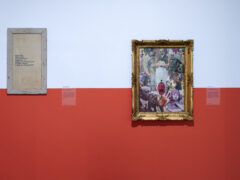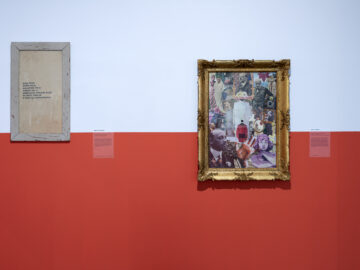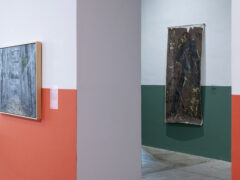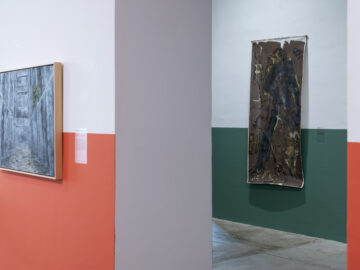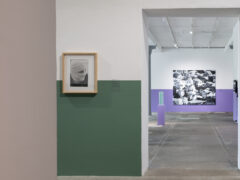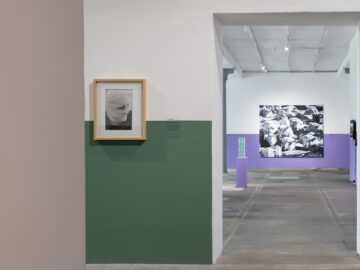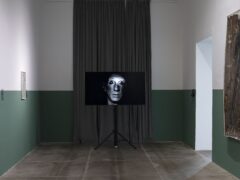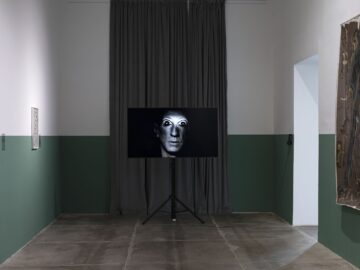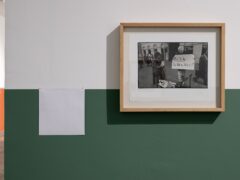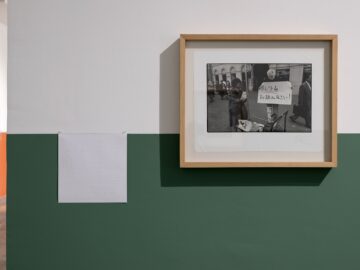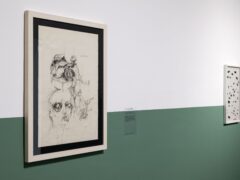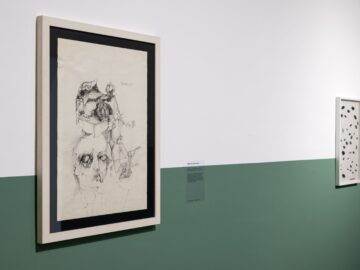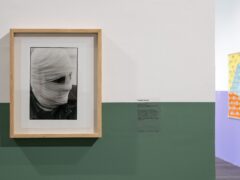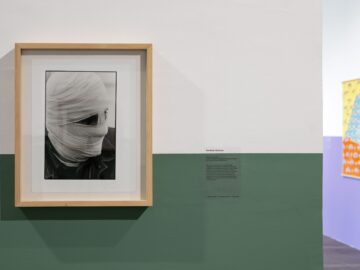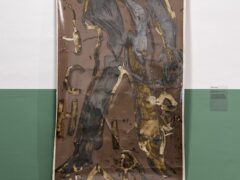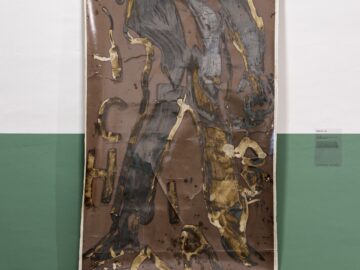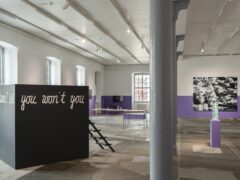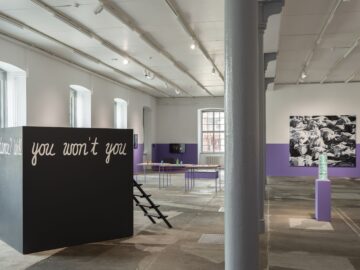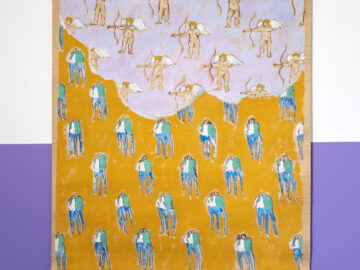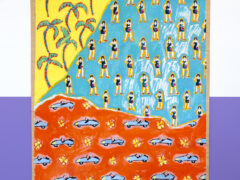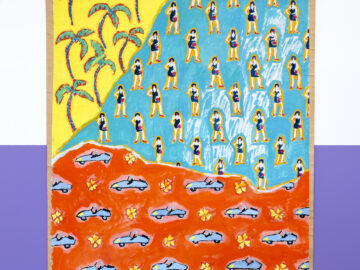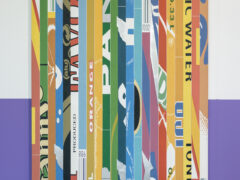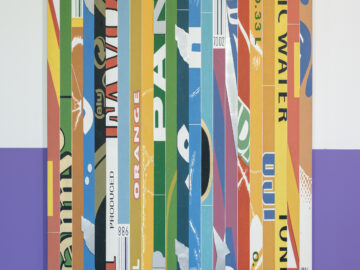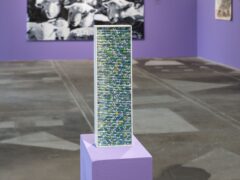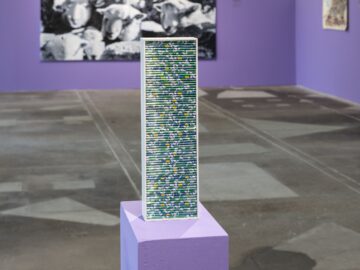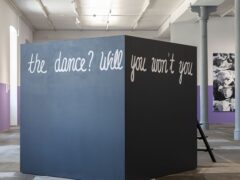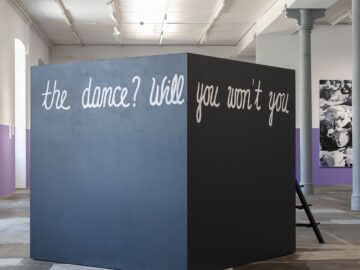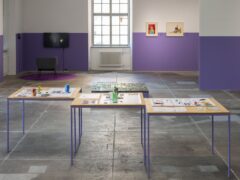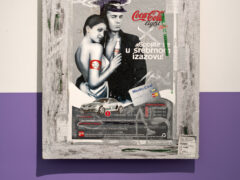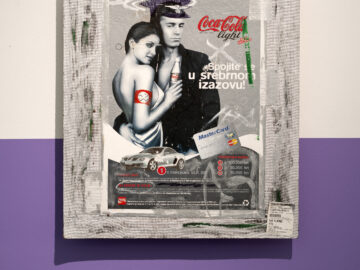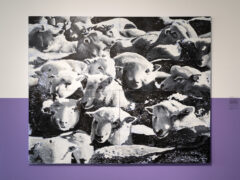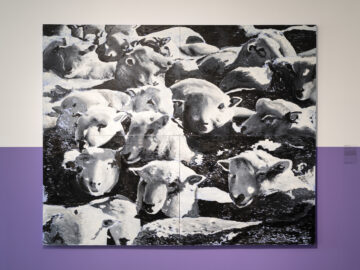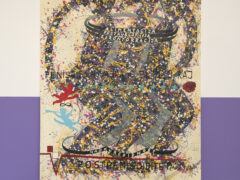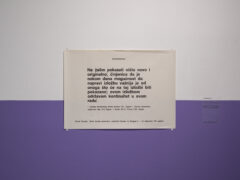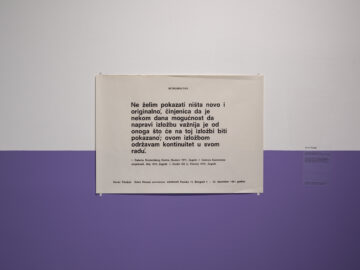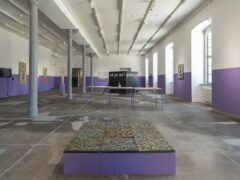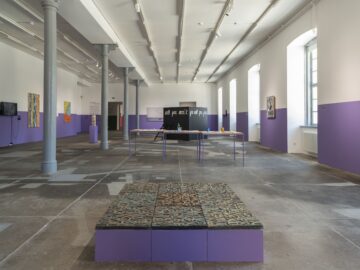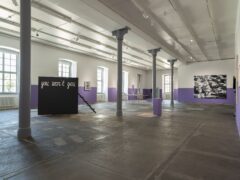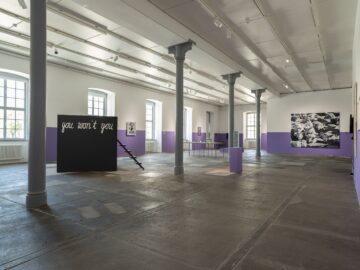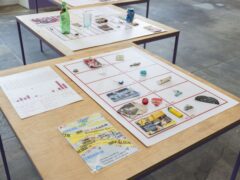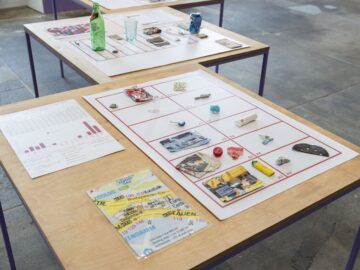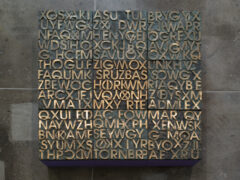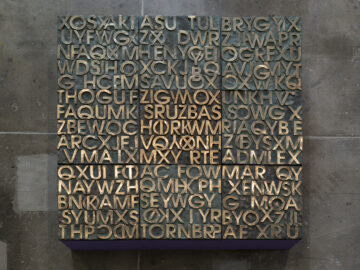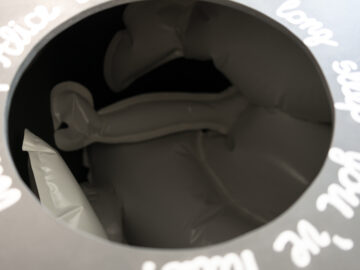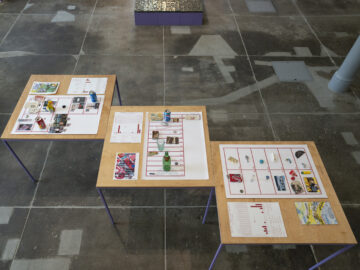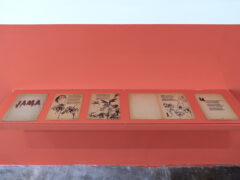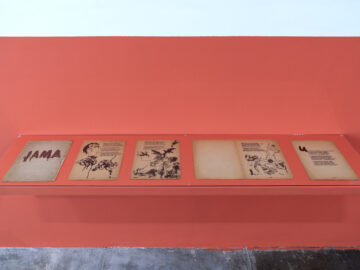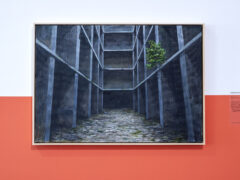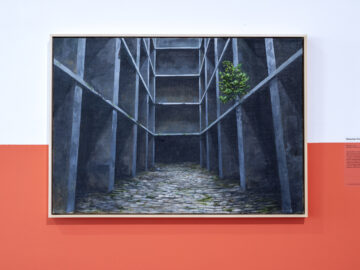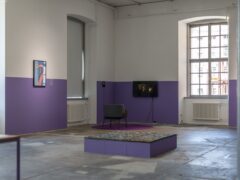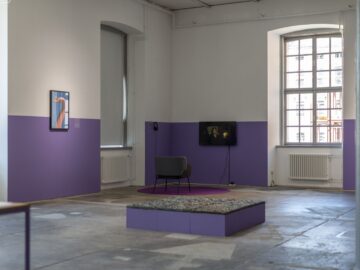Words to Be Seen – exhibition from the collections of the MMCA
14.4.–26.6.2022.
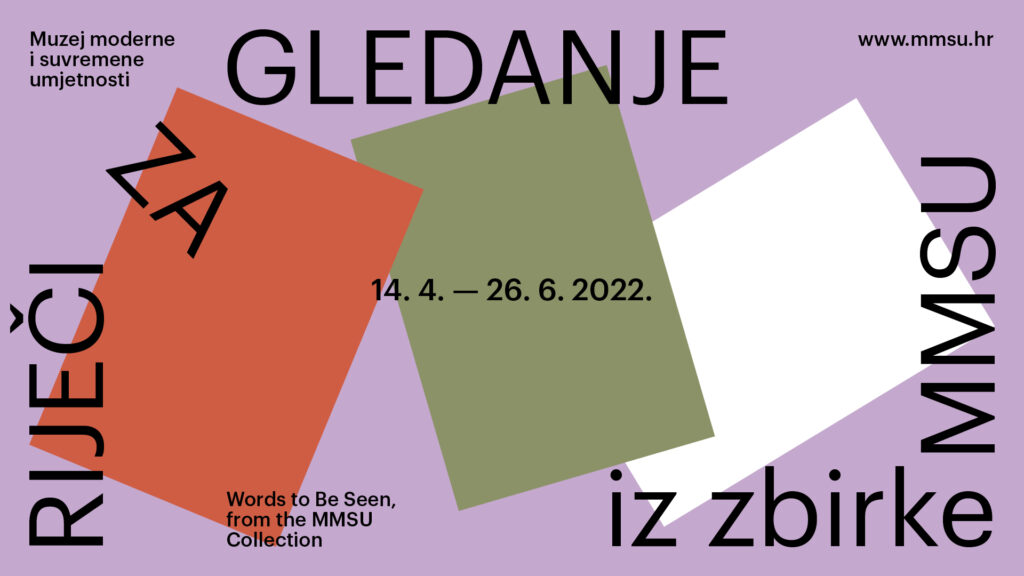
Exhibition Words to Be Seen explores different relationships between images and words. It gathers approximately fifty artworks from the MMSU collections, with an emphasis on the artists whose works have been rarely exhibited in the Museum.
With history and everyday life as universal topics, the selected artworks speak about the influence of mass media on our perception of reality – from newspapers and advertisements to Internet technologies.
From classic paintings based on a written template to artworks where text functions as the primary visual information, the exhibition examines the numerous connections between words and images. An important part of the display consists of artworks that are almost entirely based on verbal expressions, written or spoken, created in different media such as collages, comic strips, installations or videos. The exhibition also includes artworks that do not use text literally, but pursue concepts expressed in visual symbols, nonverbal storytelling and hybridization of image and text.
Words to Be Seen is related to Instructions for Watching: What the Body Wants?, the 2018 exhibition that marked the 70th anniversary of the Museum. While the 2018 exhibition dealt with the body as the essential medium for understanding art, Words to Be Seen is dedicated to a creative use of language in art, spanning the works created over the past one hundred years. However, instead of offering a chronological review, the works are combined according to their approach to verbal expression, which ranges from explanations to puzzles, from allegory to trivia. In a broader sense, the exhibition addresses the questions of how language guides us and how it trips us up, and is structured around three topics: political passions, dangerous thoughts and visual seductions.
The artworks in the first part of the exhibition space are connected by the theme of political passions that, in the schizophrenic chronicle of the 20th century and the new millennium, too often took the form of calling to arms. The political history is associated with the dilemma of a ‘correct’ model of social order, the meaning of collective priorities, as well as the role of religion in defining them.
The next part of the exhibition deals with the thoughts that pass through our minds when we are left alone with ourselves, thoughts we reluctantly express out loud. Entitled Dangerous Thoughts, this section of the exhibition brings together artworks that move along the margins of language and social control, illustrating censorship in its various meanings, from thought police and direct control to covert censorship as an indirect way of ruling people’s emotions and minds.
The third part of the exhibition, Visual Seduction, introduces us to the society of the spectacle and hyper-reality. Intended for both reading and viewing, these works give an ironic commentary on the social system characterized by inconsistent standards and ways of measuring own successfulness. Some of the works were created in an earlier period, but they are still very current and of immediate interest to us. Other works represent more recent commentaries on the society that celebrates globalization advantages, but at the same time favors extreme social divisions. Yet, instead of drawing morals and instilling fear, these works bring us back to humor. By shuffling roles, confounding our expectations and introducing witty and satirical twists, in this exhibition, humor functions as a parody.
Joining contemporary with modern, classic with new media artworks, Words to Be Seen searches into linguistic delusions and optical illusions. In the age of post-truth, where differences between true and fake are becoming relative, this exhibition is also an exercise in seeing.
Artists:
Milijana Babić; Lara Badurina; Marčelo Brajnović (courtesy of Damir Čargonja Čarli); Nemanja Cvijanović; Tanja Dabo; Sebastijan Dračić; Zlatan Dumanić; Igor Eškinja; Marina Fortunato Ercegović; Vilko Gecan; Tomislav Gotovac; Slavko Grčko; Petar Grimani; Krsto Hegedušić; Mirko Ilić; Željko Jerman; Ignjat Job; Ivo Kalina; Nives Kavurić-Kurtović; Ivan Goran Kovačić, Edo Murtić, Zlatko Prica; Pawel Kowzan; Miroslav Kraljević; Ines Krasić; Vlado Kristl; Zlatko Kutnjak; David Maljković; Andrija Maurović; Petra Mrša; Damir Očko; Bruno Paladin; Marino Paliska; Zoran Pavelić; Branko Ružić; Ana Sladetić Šabić; Bojan Šumonja; Goran Trbuljak; Romolo Venucci
Curators: Vilma Bartolić, Ivana Lučić, Ksenija Orelj, Sabina Salamon
Associate: Sonja Briski Uzelac
Design: Ana Tomić and Marino Krstačić Furić
Parallel program:
In the parallel program of the exhibition, the audience will be able to participate in guided tours on Thursdays (April 28, 12 and 26 May and 9 and 23 June at 6 pm), but also listen to the audio guide Walk through the exhibition which brings interviews with curators. Once a month, those interested will be able to participate in the Restoration Clinic program led by the museum’s conservator-restorer, while art workshops for children will be organized on a weekly basis within the MMSU Lab program at the Children’s House.
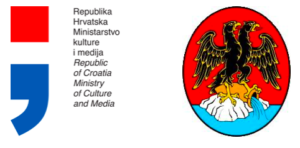
Exhibition opening: April 14th at 7 PM
Words to Be Seen, exhibition display. Photo: Hrvoje Franjić

